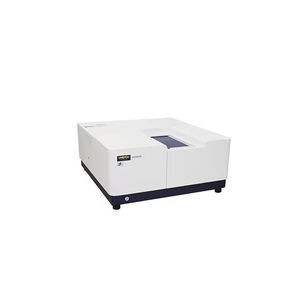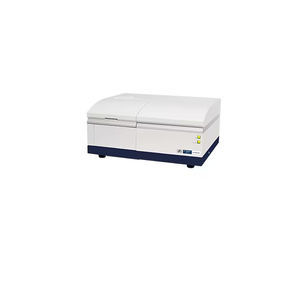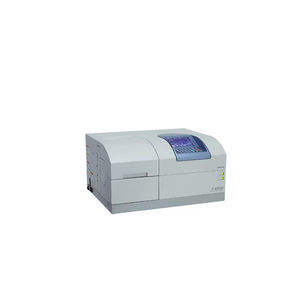
- Laboratory
- Physico-chemical analysis
- Near-infrared spectrophotometer
- Hitachi High-Technologies
UV-visible spectrophotometer UH4150near-infraredbenchtop
Add to favorites
Compare this product
Characteristics
- Type
- UV-visible, near-infrared
- Configuration
- benchtop
- Wavelength
Min.: 175 nm
Max.: 3,300 nm
- Width
900 mm
(35.4 in)- Height
1,180 mm
(46.5 in)- Weight
160 kg
(352.7 lb)
Description
Now, Model UH4150 has emerged inheriting the reliability of the U-4100 Spectrophotometer, which boasts the total number of shipments more than 1,500*1 units.
Features
Small signal level differences at detector switching afford highly accurate measurements even when the wavelength of detector is being switched.
Multiple detectors are installed in the integrating sphere to perform measurement over a wide range of wavelengths, from ultraviolet to visible to near infrared regions. The changes in photometric values at detector switching (from signal level differences) are minimized due to a design utilizing Hitachi’s expertise in integrating sphere construction, signal processing technologies, etc.
Low stray light and low polarization characteristics are attained with Hitachi’s high-performance prism-grating double monochromator system.
The UH4150 adopts a prism-grating (P-G) double monochromator optical system, continuing the established reputation of the U-4100 optical system. Large changes in light intensity of the S and P polarization are less likely for the prism-grating (P-G) system than for the generally used grating-grating (G-G) system. The UH4150 offers low noise measurements, even for low transmittance and reflectance samples.
Collimated light beam allows accurate measurement of reflected light and scattered light.
The incident angle is important for the measurement of specular reflectance of solid samples. For focused light beam, the incident angle varies depending on the lens’s focal length, etc. Consequently, the values of simulation of design of optical thin films, such as dielectric multilayer film and prism, would differ from actual measured values.
Catalogs
No catalogs are available for this product.
See all of Hitachi High-Technologies‘s catalogsOther Hitachi High-Technologies products
Spectrophotometers (UV-Vis/NIR, FL)
Related Searches
- Analysis software
- Hitachi microscope
- Compound microscope
- Hitachi laboratory microscope
- Hitachi benchtop microscope
- Control software
- Laboratory software
- Windows software
- Spectroscope
- Laboratory analyzer
- Digital microscope
- Acquisition software
- Data management software
- Biological microscope
- Benchtop spectroscope
- Hitachi spectrophotometer
- Hitachi research microscope
- Chromatograph
- Hitachi high-resolution microscope
- Compact microscope
*Prices are pre-tax. They exclude delivery charges and customs duties and do not include additional charges for installation or activation options. Prices are indicative only and may vary by country, with changes to the cost of raw materials and exchange rates.








